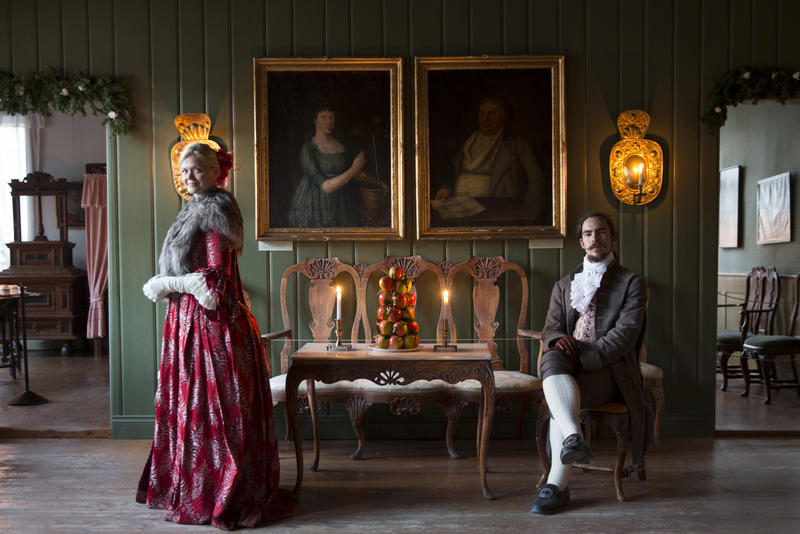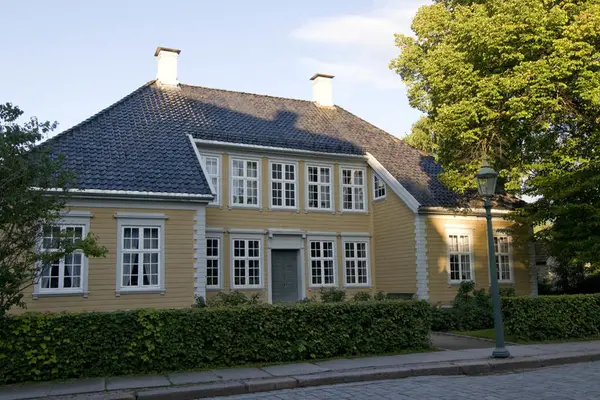- 1/1
Town House from Brevik. Anne-Lise Reinsfelt | Norsk Folkemuseum
This property was built after a fire had destroyed large areas of Brevik. Its many buildings – main house, servants’ quarters ,washhouse, woodshed with a cellar, and an outbuilding with a stable, cow barn, hay barn and hayloft – were arranged around a square courtyard.
Its original red-painted, standing wooden paneling is still preserved on the back wall. The paneling and colors of the front wall date from a rebuilding in the early 1800s. This facade fronted on Brevik’s main street. A wharf, large boathouse and warehouse lay on the shore. An herb garden was situated near the mainhouse.
The main house has nine rooms and a kitchen. There is a large reception room and two smaller rooms.
The house has been furnished on the basis of the property’s detailed probate and auction records from the late 1700s. As far as possible the house has been filled with objects taken from the Brevik-Porsgrunn section of the Folkemuseum’s collections.
The building’s special exterior with the two jutting wings has probably been inspired by the manor house at Borgestad Estate in Porsgrunn, dated to the 1690s, which was itself inspired by Count Ulrik Fredrik Gyldenløve’s manor built on his estate in Larvik in 1677. These were described in their time as being in the Italianate style. The brothers Chrystie, Hans and Jørgen, each built a house in this style in Brevik.
 Haakon Harriss | Norsk Folkemuseum
Haakon Harriss | Norsk Folkemuseum The Chrystie brothers
Hans and Jørgen were the sons of David Chrystie who came from Scotland and settled in Brevik in 1724.
David married Karen Winter and they had 12 children, ten of whom lived to adulthood. Their oldest son Hans (1720-1797) built the Chrystie house in 1761. He was a merchant, ship owner and postmaster, and was said to be a cultured and well-mannered man with scholarly interests. He owned over 100 books which was unusual for someone in Brevik at that time. The auction records after his death also list 14 bird cages.
Hans Chrystie married Dorothea Ording (1724-1778). They had nine children, four of whom reached adulthood. Her estate records reveal much about the contetns of the house. Tables could be covered with fine cloth and laid with sterling silver, porcelain and wine glasses, and Dorothea could serve her guests coffee and tea from silver pots. There were 70 chairs in the house, and the most valuable piece of furniture was a clock.
